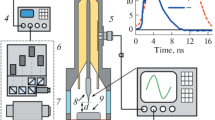A streamer is a kind of electric discharge in which there forms a column of ionized matter growing due to the amplified field at its tip. Streamers in air are an important stage of spark discharge, in particular lightning, and constitute sprites (mesospheric discharges). Streamers in large discharges (in sprites, in laboratory experiments with a meter-scale inter-electrode gap and megavolt potential difference, and in lightning) create large branched structures. Microscopic processes, which are responsible for propagation of streamers, are ionization, attachment, electron drift and diffusion, photoionization, and ion processes (detachment, recombination, etc.). Their numerical modeling reproduces the columnar shape of the ionization front, but does not allow to identify the physical and mathematical mechanisms of how the streamer radius and speed are chosen and of branching. A streamer may be described by a finite set of parameters, such as its speed and the radius of its head. The relations between these parameters are known, but do not constitute a complete set of equations: one free parameter (the radius) remains, which defines a streamer “mode” (the terminology is chosen by analogy with small transverse harmonic perturbations of a flat ionization front). As an additional requirement which would give a unique solution, we propose the choice of the most unstable mode that has the maximum speed. Thus, we treat the streamer as a nonlinear instability. This approach yields the results which agree with experimental measurements of streamer speeds, as well as of the streamer propagation threshold field.
Similar content being viewed by others
References
N. L. Allen and P. N. Mikropoulos, J. Phys. D: Appl. Phys., 32, No. 8, 913–919 (1999). https://doi.org/10.1088/0022-3727/32/8/012
P. O. Kochkin, A. P. J. van Deursen, and U. Ebert, J. Phys. D: Appl. Phys., 47, No. 14, 145203 (2014). https://doi.org/10.1088/0022-3727/47/14/145203
L. B. Loeb and J. M. Meek, The Mechanism of the Electric Spark, Stanford University Press, Stanford University, California, (1941).
G. J. Fishman, P. N. Bhat, R. Malozzi, et al., Science, 264, 1313–1316 (1994). https://doi.org/10.1126/science.264.5163.1313
P. O. Kochkin, C. V. Nguyen, A. P. J. van Deursen, and U. Ebert, J. Phys. D: Appl. Phys., 45, No. 42, 425202 (2012). https://doi.org/10.1088/0022-3727/45/42/425202
P. O. Kochkin, A. P. J. van Deursen, and U. Ebert, J. Phys. D: Appl. Phys., 48, No. 2, 025205 (2015). https://doi.org/10.1088/0022-3727/48/2/025205
E. M. Bazelyan and Y. P. Raizer, Spark Discharge, CRC Press, New York, (1998).
R. Morrow and J. J. Lowke, J. Phys. D: Appl. Phys., 30, 614–627 (1997). https://doi.org/10.1088/0022-3727/30/4/017
Y. P. Raizer, Gas discharge physics, Springer, Berlin (1991).
J. Teunissen and U. Ebert, J. Phys. D: Appl. Phys., 50, 474001 (2017). https://doi.org/10.1088/1361-6463/aa8faf
O. Chanrion and T. Neubert, J. Comput. Phys., 227, No. 15, 7222–7245, (2008). https://doi.org/10.1016/j.jcp.2008.04.016
B. Bagheri, J. Teunissen, U. Ebert, et al., Plasma Sources Sci. Technol., 27, 095002, (2018). https://doi.org/10.1088/1361-6595/aad768
V. P. Pasko, in: M. Füllekrug, E. A. Mareev, and M. J. Rycroft, eds., NATO Science Ser. II: Mathematics, Physics and Chemistry, V. 225. Sprites, Elves and Intense Lightning Discharges, Springer, Dordrecht (2006), p. 253–311.
U. Ebert and D. D. Sentman, J. Phys. D: Appl. Phys., 41, No. 23, 230301 (2008).
G. A. Dawson and W. P. Winn, Z. Phys., 183, 159 (1965). https://doi.org/10.1007/BF01380792
I. Gallimberti, J. Phys. D: Appl. Phys., 5, 2179–2189 (1972). https://doi.org/10.1088/0022-3727/5/12/307
J. Qin and V. P. Pasko, J. Phys. D: Appl. Phys., 47, 435202 (2014). https://doi.org/10.1088/0022-3727/47/43/435202
S. Chen, R. Zeng, and C. Zhuang, J. Phys. D: Appl. Phys., 46, No. 37, 375203 (2013). https://doi.org/10.1088/0022-3727/46/37/375203
W. J. Yi and P. F. Williams, J. Phys. D: Appl. Phys., 35, No. 3, 205–218 (2002).
T. M. P. Briels, J. Kos, G. J. J. Winands, et al., J. Phys. D: Appl. Phys., 41, 234004 (2008). https://doi.org/10.1088/0022-3727/41/23/234004
G. V. Naidis, Phys. Rev. E, 79, 057401 (2009). https://doi.org/10.1103/PhysRevE.79.057401
N. G. Lehtinen and N. Østgaard, J. Geophys. Res., 123, 6935–6953 (2018). https://doi.org/10.1029/2018JD028646
M. B. Zheleznyak, A. K. Mnatsakanyan, and S. V. Sizykh, High Temp. Sci., 20, No. 3, 357–362 (1982).
M. I. D’yakonov and V. Y. Kachorovskii, Sov. Phys. JETP, 68, No. 5, 1070–1074 (1989).
S. V. Pancheshnyi, S. M. Starikovskaia, and A. Y. Starikovskii, J. Phys. D: Appl. Phys., 34, No. 1, 105–115 (2001). https://doi.org/10.1088/0022-3727/34/1/317
R. F. Harrington, Field Computation by Moment Methods, IEEE Press, New York (1993).
N. Y. Babaeva and G. V. Naidis, IEEE Trans. Plasma Sci., 25, 375–379 (1997). https://doi.org/10.1109/27.602514
V. P. Pasko, U. S. Inan, and T. F. Bell, Geophys. Res. Lett., 25, No. 12, 2123–2126 (1998). https://doi.org/10.1029/98GL01242
A. N. Lagarkov and I. M. Rutkevich, Ionization Waves in Electrical Breakdown of Gases, Springer-Verlag, New York (1994).
L. B. Loeb, Science, 148, No. 3676, 1417–1426, (1965), https://doi.org/10.1126/science.148.3676.1417.
A. Y. Starikovskiy and N. L. Aleksandrov, Plasma Sources Sci. Technol., 29, 075004 (2020). https://doi.org/10.1088/1361-6595/ab9484
G. Derks, U. Ebert, and B. Meulenbroek, J. Nonlinear Sci., 18, 551–590 (2008). https://doi.org/10.1007/s00332-008-9023-0
M. I. D’yakonov and V. Y. Kachorovskii, Sov. Phys. JETP, 67, No. 5, 1049–1054 (1988).
N. L. Aleksandrov and E. M. Bazelyan, J. Phys. D: Appl. Phys., 29, 740–752 (1996). https://doi.org/10.1088/0022-3727/29/3/035
V. P. Pasko, “Dynamic Coupling of Quasi-Electrostatic Thundercloud Fields to the Mesosphere and Lower Ionosphere: Sprites and Jets,” PhD thesis, Stanford University, Stanford, CA (1996).
I. Gallimberti, J. Phys. Colloques, 40, No. C7, 193–250 (1979). https://doi.org/10.1051/jphyscol:19797440
Author information
Authors and Affiliations
Corresponding author
Additional information
Translated from Izvestiya Vysshikh Uchebnykh Zavedenii, Radiofizika, Vol. 64, Nos. 1, pp. 12–28, January 2021. Russian DOI: 10.52452/00213462_2021_64_1_12
Rights and permissions
About this article
Cite this article
Lehtinen, N.G. Physics and Mathematics of Electric Streamers. Radiophys Quantum El 64, 11–25 (2021). https://doi.org/10.1007/s11141-021-10108-5
Received:
Accepted:
Published:
Issue Date:
DOI: https://doi.org/10.1007/s11141-021-10108-5



